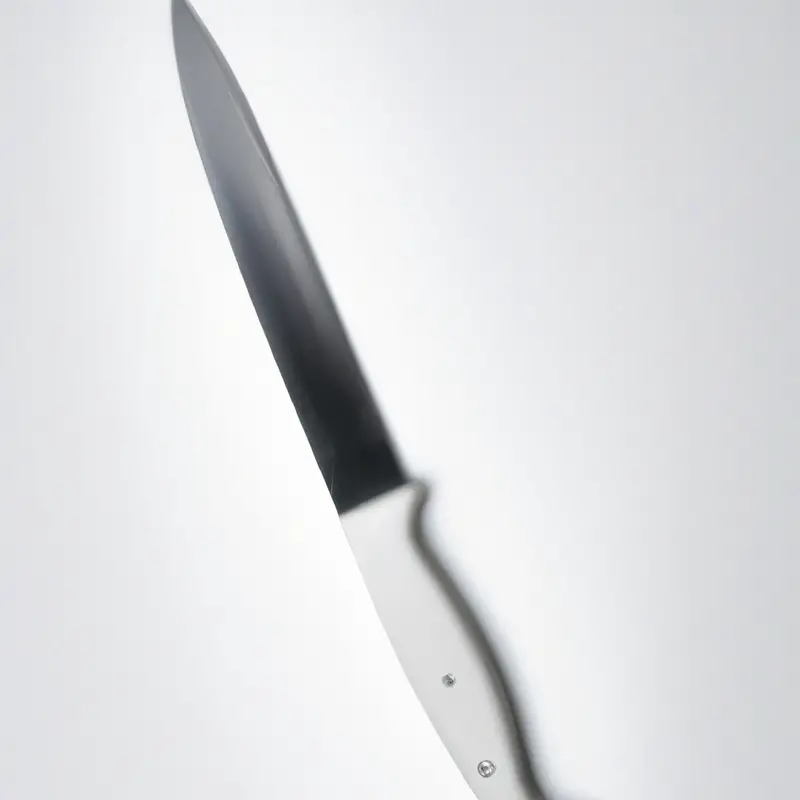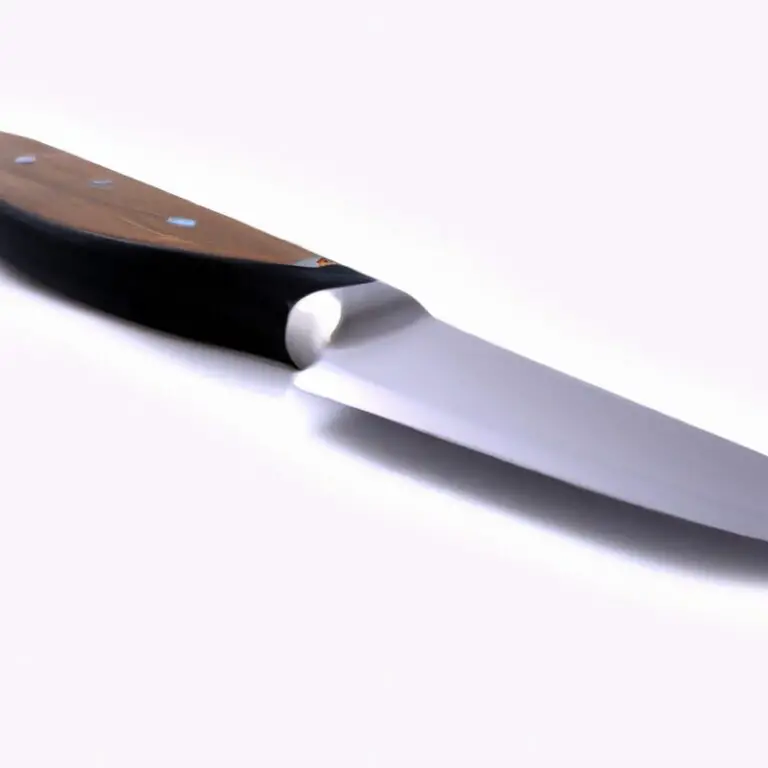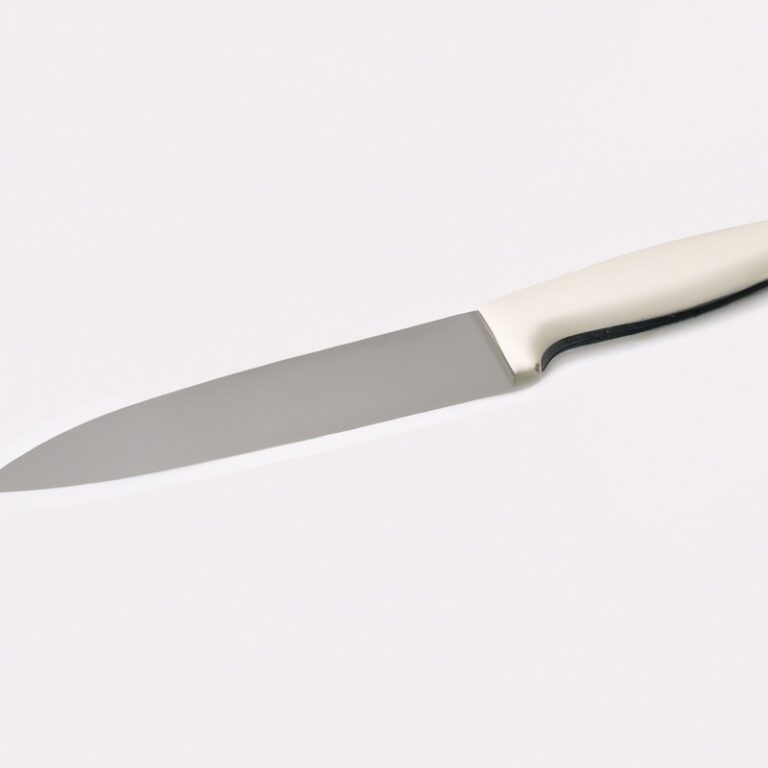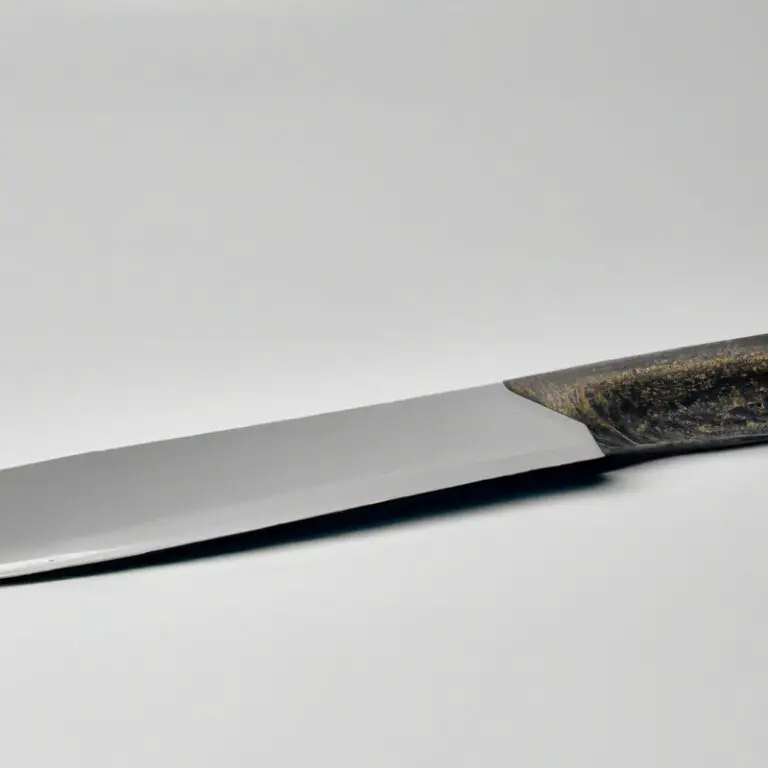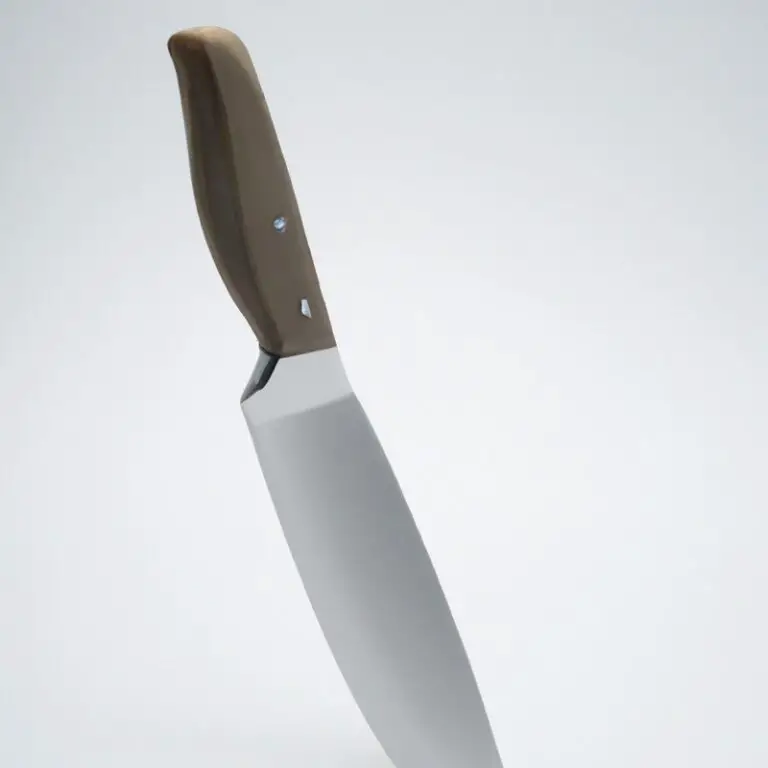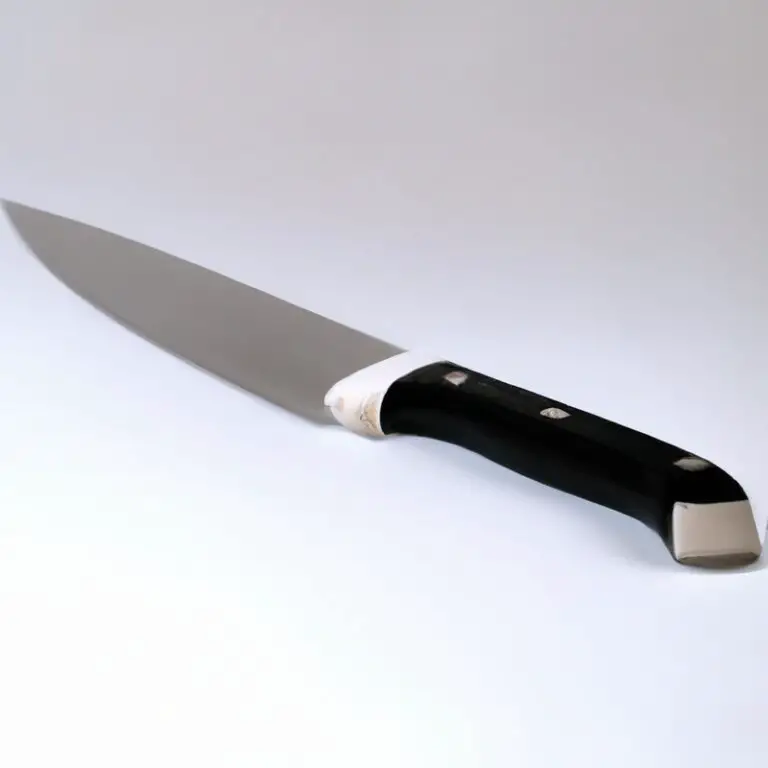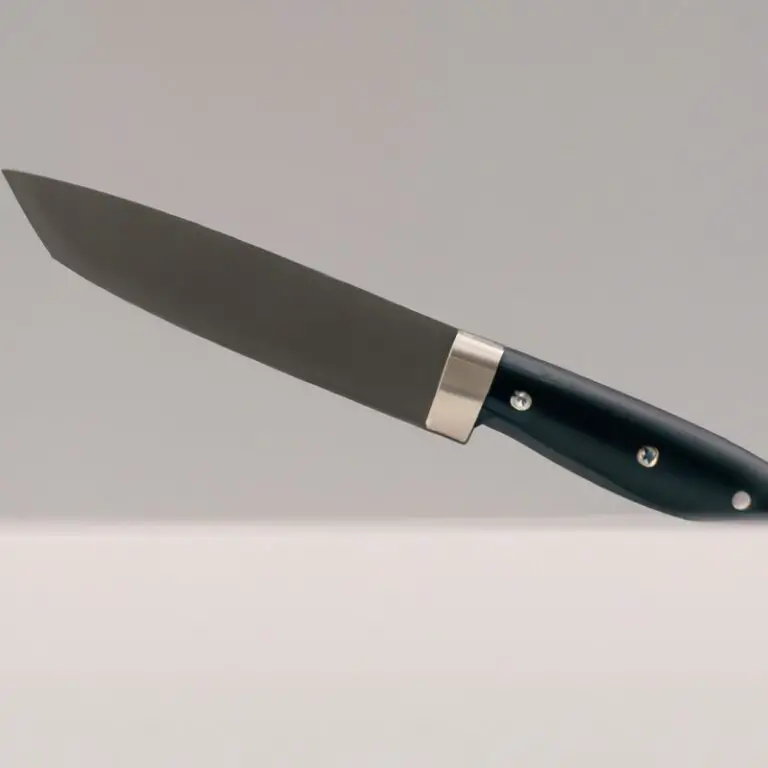What Is The Purpose Of a Bolster-Less Chef Knife? Enhanced!
Key Takeaways:
- A bolster-less chef knife offers greater maneuverability, making it easier to perform intricate cutting tasks.
- The lack of a bolster allows for easier sharpening and maintenance, resulting in a longer lifespan for your chef knife.
- With no bolster in the way, you can cut at the heel of the blade, increasing your cutting surface area.
- Using a bolster-less chef knife can help prevent hand fatigue and increase overall kitchen efficiency.
Have you ever wondered why some chef knives have a thick portion of metal between the blade and the handle, while others do not? That thick portion is called a bolster, and it’s a polarizing feature in chef knives.
Bolstered knives are more traditional, but some argue that they can be uncomfortable and limit the blade’s agility.
That’s where bolster-less chef knives come into play. In this article, we’ll dive into the benefits of using a bolster-less chef knife, the role of the handle, how to achieve perfect weight and balance, and much more.
By the end, you’ll have a clear understanding of whether a bolster-less chef knife is the right choice for you.
| Purpose | Description |
| Better control | Bolster-less chef knives offer better control and balance, allowing chefs to make precise cuts with minimal effort. |
| Easier sharpening | Without a bolster, the blade is uninterrupted and easier to sharpen, maintaining its sharpness for a longer time. |
| Lighter weight | By removing the bolster, the knife is lighter weight and more comfortable to use for an extended period of time. |
| Better grip | The absence of a bulky bolster allows for a comfortable grip, reducing strain on the hand and wrist. |
Understanding the anatomy of a chef knife: Why does a bolster matter or not matter?
The bolster of a chef knife refers to the thick, metal portion that lies between the blade and the handle. It can serve a variety of purposes, including providing balance and stability.
However, some chefs prefer a bolster-less knife because it can provide more comfort and control during use, especially when performing precision work.
Additionally, a bolster-less knife can be easier to sharpen and maintain, as there are no crevices for debris to accumulate in. Ultimately, the decision of whether or not to use a bolster on a chef knife comes down to personal preference and the specific needs of the user.
The benefits of using a bolster-less chef knife: Comfort, control, and agility
A bolster-less chef knife provides several benefits, including comfort, control, and agility. Without a bulky bolster, the knife feels lighter and easier to maneuver, reducing fatigue and improving comfort.
Additionally, the lack of a bolster allows for a more comfortable grip, giving the user greater control over the knife.
With increased control, the user can make more precise cuts and tackle delicate ingredients with ease. The absence of a bolster also allows for greater agility, making it easier to perform intricate tasks and maneuvers.
Overall, a bolster-less chef knife provides both comfort and precision, making it a popular choice for both home cooks and professional chefs.
Bolster-less chef knives for precision work: Fine cuts, delicate ingredients, and intricate designs
Bolster-less chef knives are ideal for precision work, making fine cuts, working with delicate ingredients, and creating intricate designs. These knives lack the bolster, which is the thick metal collar between the blade and handle found in traditional chef knives.
The absence of the bolster allows for a more comfortable grip, greater control, and increased agility when handling the knife.
The lack of the bolster also makes the blade easier to sharpen and hone, as the entire length of the blade can be accessed. Chef knives without bolsters come in a range of materials, such as stainless steel, carbon steel, or ceramic.
The choice of material depends on personal preference and intended use.
For those who need maximum precision and control when working with food, a bolster-less chef knife is a great option.
The role of the handle in bolster-less chef knives: Ergonomics, grip, and durability
The handle of a bolster-less chef knife plays a critical role in providing comfort, control, and durability. The ergonomic design of the handle ensures a comfortable grip, reducing the risk of fatigue, even during prolonged use.
The absence of a bolster allows for a wider grip, fitting the hand more comfortably.
The handle material can also affect the durability, with materials such as durable plastics and composites being a popular choice. Additionally, the handle’s texture can impact the grip, with some materials offering slip-resistant surfaces to improve grip even when wet.
It is important to choose a handle that feels comfortable and secure in your hand, as it can significantly impact your ability to prepare food effectively and safely.
Weight and balance in bolster-less chef knives: Achieving the perfect balance for your needs
Weight and balance are crucial factors in choosing a bolster-less chef knife. Achieving the perfect balance between the blade and handle ensures better control, reduced fatigue, and improved accuracy.
A well-balanced knife feels natural in your hand, allowing you to chop, slice, and dice with ease.
When selecting a bolster-less chef knife, consider the weight distribution and balance point. The balance point should be at the heel, where the blade and handle meet, or slightly forward, depending on your preference.
Choose a knife that feels comfortable, well-balanced, and suitable for your cutting style and needs.
Remember to hold different knives in various grips to test how they feel in your hand and find the one that’s most comfortable.
The versatility of bolster-less chef knives: From home cooking to professional kitchens
Bolster-less chef knives are versatile tools that can be used in various settings, from home cooking to professional kitchens. Their lack of bolster makes them ideal for performing intricate cuts and precise work.
The slender blade allows easy maneuverability, making them great for trimming meat, filleting fish, and chopping herbs.
Bolster-less chef knives also provide a comfortable grip and control that is beneficial to both experienced and novice chefs. They can be used for everyday meal preparation, culinary competitions, and even in the art of sushi making.
Additionally, they come in different sizes, making them suitable for small-scale tasks and large-scale cooking projects.
In summary, bolster-less chef knives are the go-to choice for chefs who demand precision and versatility in their kitchen tools.
Choosing the right blade material for a bolster-less chef knife: Stainless steel, carbon steel, or ceramic
When it comes to choosing the right blade material for a bolster-less chef knife, there are three main options: stainless steel, carbon steel, and ceramic. Each material has its own advantages and disadvantages, so it is important to consider your individual needs and preferences before making a final decision.
Stainless steel is a popular choice for chef knives because it is durable, corrosion-resistant, and easy to maintain.
It also tends to be more affordable than other materials, making it a good option for home cooks on a budget. However, stainless steel is not as sharp as carbon steel or ceramic, and it may require more frequent sharpening to maintain its edge.
Carbon steel blades are known for their sharpness and edge retention, making them a favorite among professional chefs and serious home cooks.
They can also develop a beautiful patina over time, adding to their character and charm. However, carbon steel is more prone to rust and corrosion than stainless steel, and it requires more care and maintenance to keep it in top condition.
Ceramic blades offer excellent sharpness and edge retention, as well as resistance to corrosion and wear.
They are also lightweight and easy to handle, making them a good choice for delicate tasks. However, ceramic can be brittle and prone to chipping or breaking, so it is not recommended for heavy-duty use.
Ultimately, it comes down to personal preference when choosing the right blade material for a bolster-less chef knife.
Consider your specific needs, cooking style, and budget before making a decision.
Maintenance tips for bolster-less chef knives: Sharpening, honing, and cleaning
Maintaining a bolster-less chef knife is essential for optimal performance and longevity. Here are some maintenance tips for sharpening, honing, and cleaning.
Sharpening: Use a sharpening stone or electric sharpener to sharpen the blade.
Remember to maintain the original edge angle while sharpening and rinse the blade after sharpening to remove any debris. Honing: Use a honing steel to straighten the blade’s edge and remove any burrs.
It’s essential to hone your blade regularly to keep it sharp and prevent it from becoming dull.
Cleaning: Clean your knife after every use to prevent corrosion and rust buildup. Use a mild detergent and warm water to clean the blade, then dry it thoroughly.
Avoid placing the knife in the dishwasher, as the high heat and harsh detergents can damage the blade.
By following these simple maintenance tips, you can ensure that your bolster-less chef knife remains sharp, durable, and reliable for all your culinary needs.
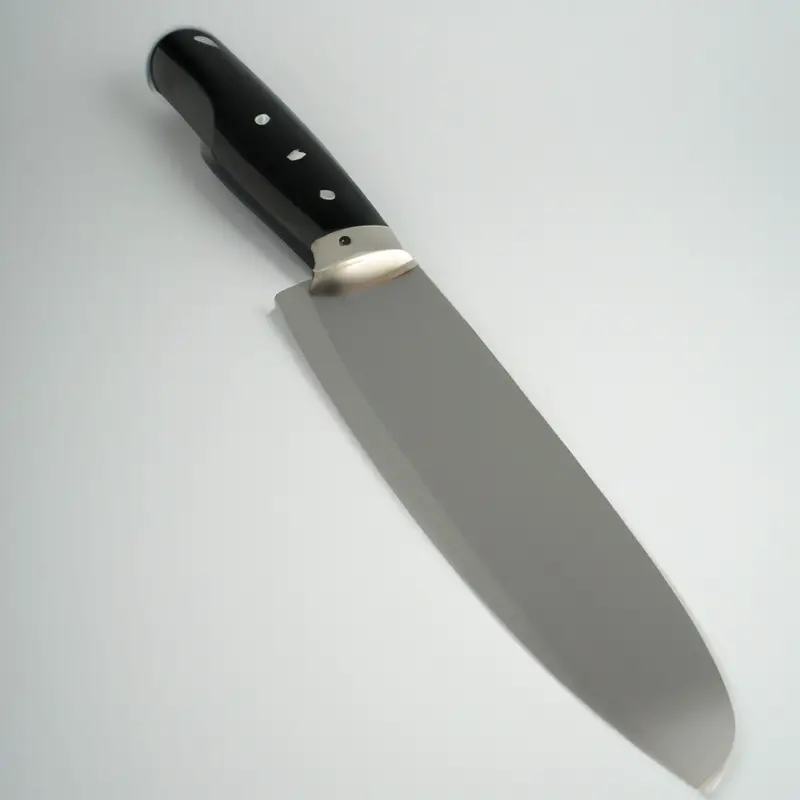
Comparison between bolstered and bolster-less chef knives: Which one is better for you?
When it comes to choosing between a bolstered and bolster-less chef knife, it ultimately comes down to personal preference and intended use. Bolstered knives are heavier and offer a more traditional feel, providing better balance and protection for your hand.
However, this added weight can also cause fatigue and limit control, which is why bolster-less knives have become increasingly popular in recent years.
Bolster-less knives are lighter and offer greater agility, making them ideal for precision work such as fine cuts or delicate ingredients. The lack of a bolster also allows for easier sharpening and maintenance, making it a more practical option for some home cooks.
However, bear in mind that it might not offer the same level of protection or balance as a bolstered knife.
Overall, if you have experience with both types of knives, you should be able to gauge your preference based on weight, comfort, and intended use. For those unfamiliar with the difference between bolstered and bolster-less knives, it’s always advisable to try both before making a purchase, to see which feels more comfortable and natural in your hand.
Bolster-less chef knives in traditional Japanese cuisine: The history and evolution of the gyuto knife
Bolster-less chef knives are a hallmark of traditional Japanese cuisine and are known for their sharpness, precision, and agility. One particular type of bolster-less chef knife that has gained global recognition is the gyuto knife.
Originally designed for cutting and preparing meat, the gyuto knife has evolved over time to become a versatile kitchen tool suitable for all types of culinary tasks.
The history of the gyuto knife can be traced back to the Edo period in Japan (1603-1868), where it was commonly used by chefs in Western-style restaurants to prepare meat dishes. However, it was not until after World War II that the gyuto knife began gaining popularity among home cooks and professional chefs alike.
Today, the gyuto knife is highly regarded for its ability to slice, chop, and dice with precision, making it an essential tool in any kitchen.
The gyuto knife differs from traditional Western kitchen knives in its shape and design. It features a double bevel blade that is thin and sharp, allowing for effortless slicing and precision cuts.
Additionally, the handle of the gyuto knife is often made of lightweight materials such as wood, making it easy to handle and control.
The gyuto knife exemplifies the art of Japanese craftsmanship, combining functionality with precision and beauty in one kitchen tool. Its evolution and popularity among chefs and home cooks alike highlight its value as a bolster-less chef knife in traditional Japanese cuisine and beyond.
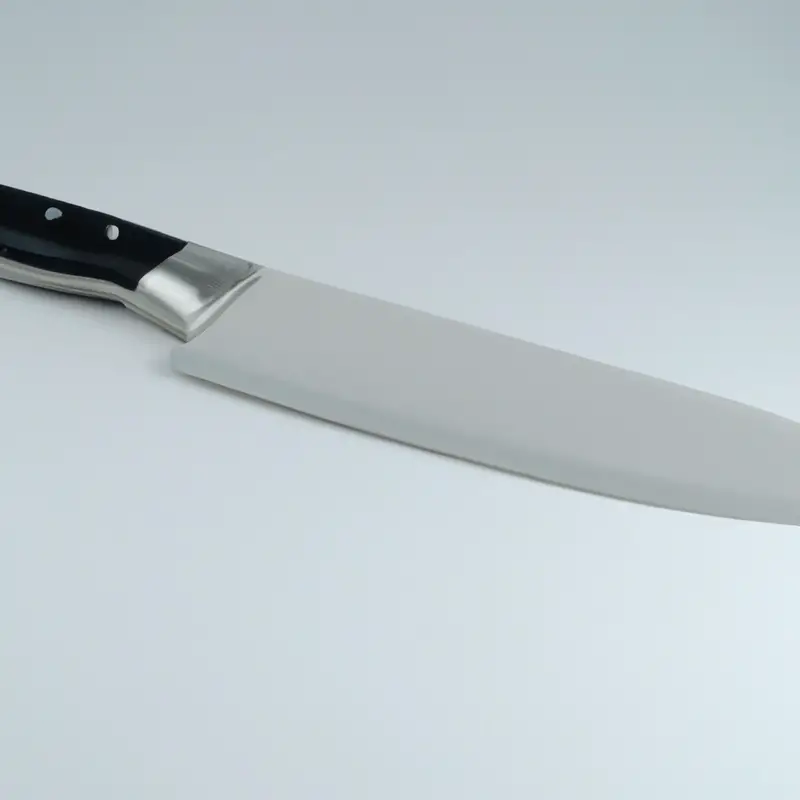
Final Verdict
Choosing a bolster-less chef knife over a bolstered one can significantly improve your comfort, control, and agility in the kitchen. With this type of knife, precision work, fine cuts, delicate ingredients, and intricate designs become more manageable and enjoyable.
The handle, weight, balance, and blade material selection all play crucial roles in achieving the perfect cut.
Whether you’re a home cook or a professional chef, a bolster-less chef knife can be a versatile and reliable tool. Maintenance is also crucial, with regular sharpening, honing, and cleaning necessary to keep your knife in optimal condition.
With this knowledge in hand, you can make an informed choice between a bolstered and bolster-less chef knife.
And for those interested in traditional Japanese cuisine, understanding the history and evolution of the gyuto knife can give you a deeper appreciation for the craftsmanship and artistry behind this type of blade. So, invest in a bolster-less chef knife today and take your culinary skills to the next level!

